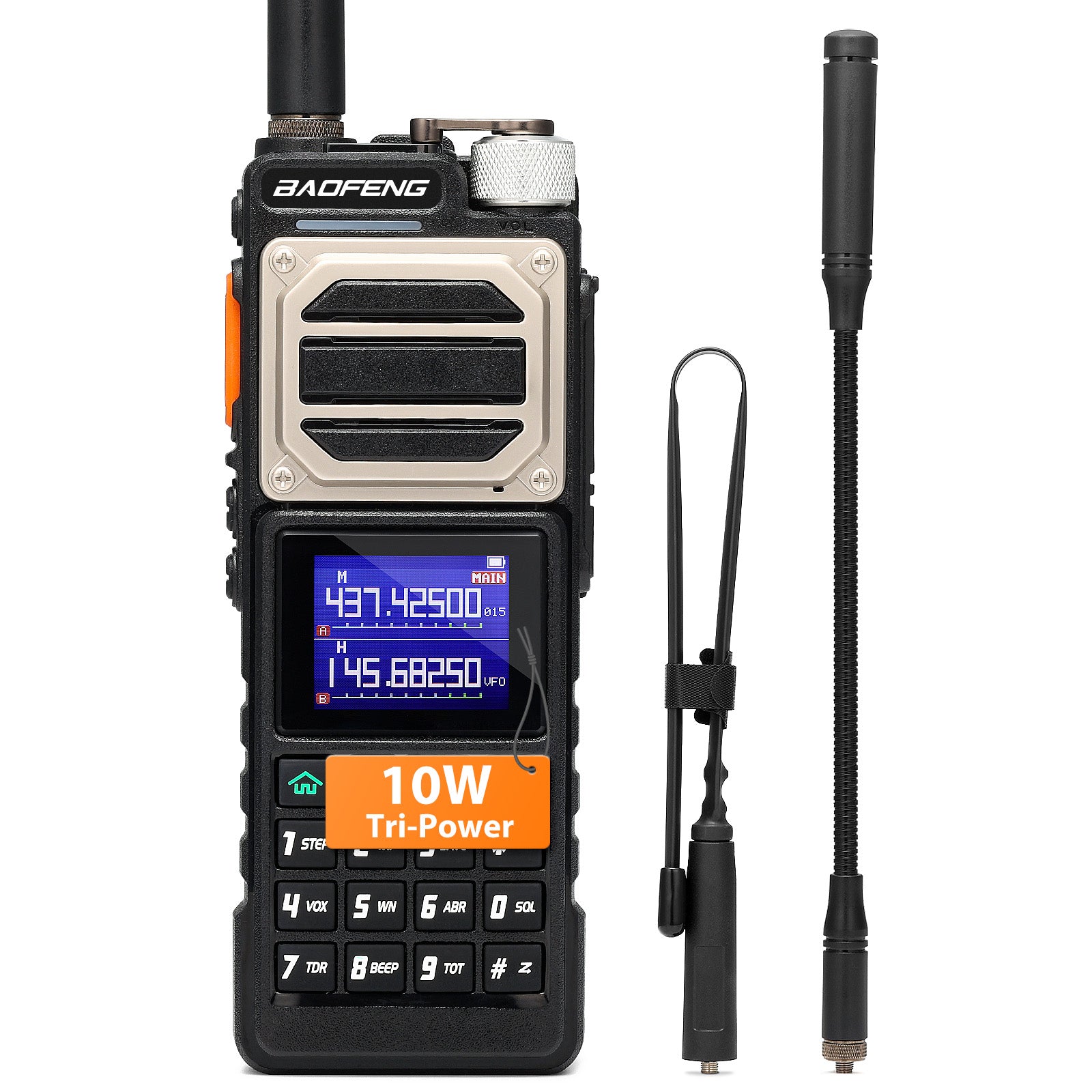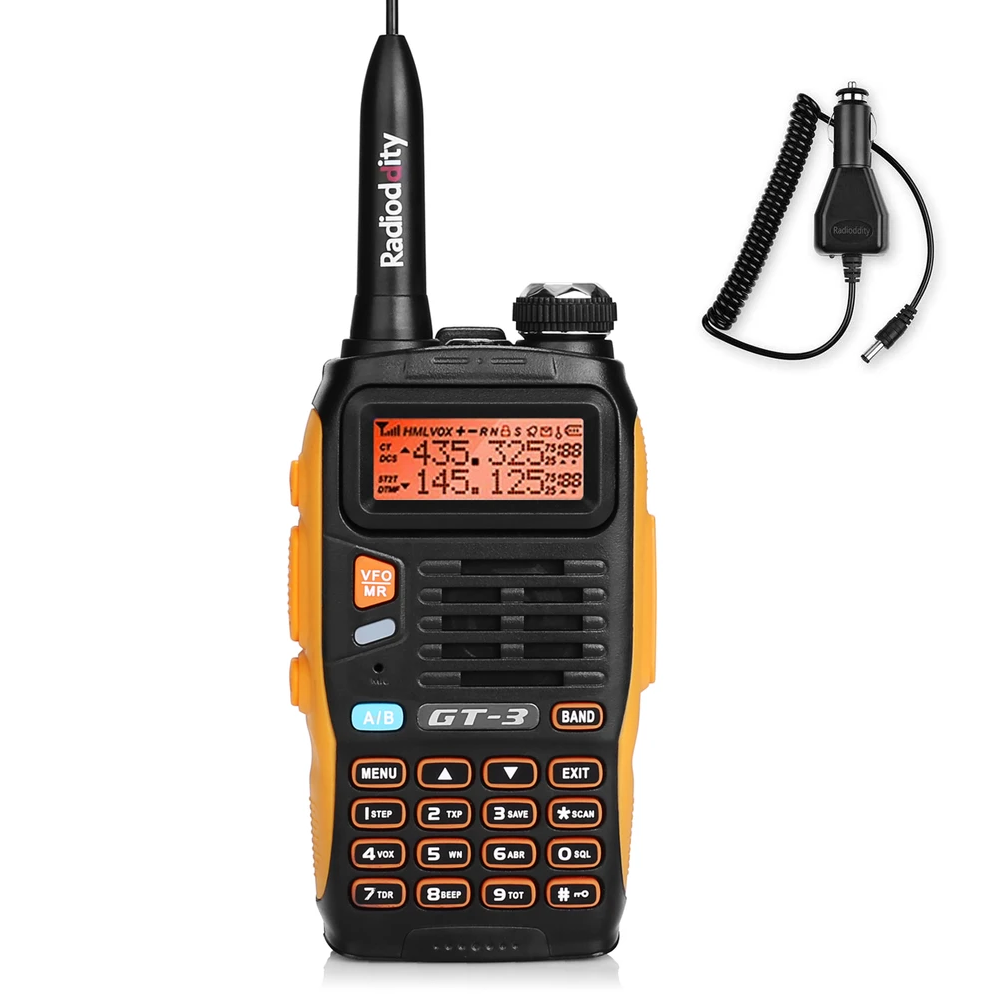Radioddity QT60 Review - A Great Radio for Your Ham Shack
- Ham Talk, Product Review
-
 Posted by Jackson Chen
Posted by Jackson Chen
- Leave a comment
-- by E.T. Bryant
This is my Radioddity QT60 10-meter transceiver review. Let me start by saying that I love everything about this radio. I liked the style when I first saw it. It doesn’t have the same retro look as the QT40, its appearance is more like the modern mobile radios on the market today. I prefer the QT 60’s smooth lines and its large display. Of course, it also has more transmission power than the QT40.
I have tested the radio with two external antennas, an end-fed and a 10-meter dipole. I have used the QT60 on both antennas and it was able to pick up and contact Ham radio operators as far away as Japan and Australia. I have also compared the QT60 to my
Xiegu G90 radio, which I normally use for FT8 and like using the waterfall display to find nearby stations. I thought I might be able to use the G90 to monitor its waterfall 10 meters and be able to see who is close to the frequency I am on using the QT60. However, there must have been some feedback coming from the QT60, on transmission, which irritated the G90 though they were on separate antennas. I do believe the fault is not with the QT60 but with the location of both radios. So, to find out the stations that are transmitting and their frequency I use the dxheat.com/dxc website. It is a great resource to find out who is on their radio at any time.
I have found that both radios have very good reception. However, I would say that the QT60 seems to be slightly better at filtering out noise. The QT60 with its 60 watts of power lets me contact stations further away than my Xiegu G90 which has only 20 watts. As you can tell I am not using the QT60 as a mobile radio but have it mounted to my workbench as a base station, with the bracket that came with the radio.
It is an impressive-looking radio with its large orange display. I find the text easy to read for someone who needs glasses to read, like me. I can read the display without my glasses.

I like the ability to adjust the RF receive and the power with a knob on the radio. I have found them to be rather sensitive to the touch though. I also like the Channel Switch Push Key (which is a knob for selecting the step size of frequency or channels) being able to select specific parts of a frequency to adjust by pushing on the knob. Some radios like the Xiegu G90 have a similar tuning knob that will also allow you to select a different part of the frequency by pressing on the knob. I think seeing the frequency makes it easier to tune for me. I prefer seeing the frequency rather than a channel.
I downloaded the programming software from the
Radioddity website and programming the radio was very easy. You will need to purchase a USB programming cable as that is not included with the radio.
Another reason that I like this radio is that it can also do 11 and 12 meters. 12 meters would have it serve as a CB radio as well. A simple internal modification is all that is needed. While I like the option of having the extra bands it would appear to me opening the radio could void the warranty. Check with Radioddity Technical Support before removing the cover. However, if you do decide to make the modification Radioddity has come through with a zip file that has documents to help you do the modifications. CLICK HERE to get.
You can count on Radioddity to give you plenty of help when you need it.
There is a very nice manual that comes with the radio, and you will want to keep that in a safe place for later reference. You can also download a PDF of the manual from the Radioddity website. But there are some things the manual did not explain to me. First, when the SWR protect is set to 3 and the radio detects a higher SWR it will present a message SWRHIGH.

At first, I did not understand why I was getting this message, since my antenna analyzer was showing a SWR below 2. However, the Radioddity Support team helped me to understand why I might be getting the message.
The second item was how to listen to the weather frequency. I was not able to find any reference in the manual about this but by watching a YouTube video they showed that you first hit the Band button, then the Menu button, and finally the Mode button.

To change back to the frequency, you just repeat the steps. I think this should be added to the manual along with any messages you might see on the screen.
In closing this is a great radio for someone with just their Technician Class license. However, because of its inexpensive price, it is also a great radio to add to your Ham Shack for any Class operators. I would highly recommend purchasing the QT60. I would also like to recommend the article Everything You Want to Know about 10-Meter Radio from Radioddity's website. You will find there is a very nice chart of 10-meter band frequencies shown in the article. This will show you when you can switch to the different modes.
![Radioddity GD-168 [OPEN BOX] - Radioddity](http://radioddity.myshopify.com/cdn/shop/files/GD-168_1600x1600_3922a234-2fe4-4b80-8282-3f6d17a10d71.png?v=1741052607)










![Baofeng GT-5R 5W Dual Band Radio [Upgraded Legal Version of UV-5R] - Radioddity](http://radioddity.myshopify.com/cdn/shop/products/GT-5RImage.png?v=1616751303)
![Baofeng UV-5R PLUS [5 Colors] | DUAL BAND | 4/1W | 128CH | FLASHLIGHT - Radioddity](http://radioddity.myshopify.com/cdn/shop/products/3_58c037e1-560a-4c85-bd75-67c202269d29.jpg?v=1620894599)










![GA-2S UHF Long Range USB Two way Radio [2/4/6 Packs] - Radioddity](http://radioddity.myshopify.com/cdn/shop/products/5_96d2d28c-8609-4f29-926b-d423141df2f4.jpg?v=1598864722)



![Baofeng BF-888S [2 Pack] | UHF | 5W | 16CH | CTCSS/DCS | Flashlight - Radioddity](http://radioddity.myshopify.com/cdn/shop/products/1___1___1.jpg?v=1609202373)
![Baofeng GT-1 [2 Pack] | UHF | 5W | 16CH | Flashlight | FM Function Two-Way Radio - Radioddity](http://radioddity.myshopify.com/cdn/shop/products/ia_100000006122.jpg?v=1610525724)



















6 comments
Jeff Smith
I enjoy my QT-60 radio also. I have talked just about all over the world when the 10 meter propagation is good@